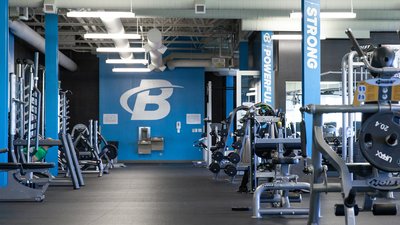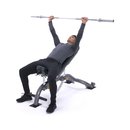Q. I've heard numerous arguments about rep ranges and I'm not sure what to believe. When it comes to resistance training, how important are reps?
When you enter the gym, leave your counting at the door. Tracking reps just leads to confusion:
"Is it low reps for mass and high reps to drop fat? Is it the other way around? Perhaps moderate reps are best for overall performance."
"What counts as a high vs. low rep? What one person considers 12 reps at high weight could be another's warm-up."
And so on. We've all heard numerous "rep-range" arguments, so let's sort through the bro science and take a look on what's really the best choice.
First off: The whole "low reps for mass, high reps for cutting" is a myth. There's no rep range that can make up for a lack of intensity, so train without the constraints a set number may place on you. Follow my three resistance tips to help focus on what's really important when you enter the gym—gaining mass and cutting fat.
1. Train with Intensity
Regardless of your fitness goals, push yourself in both weight and volume. While it might seem simple, intensity is actually a hard-to-grasp concept. Believe it or not, most people haven't taken their training to that next level. Break out of your comfort zone and change your mental approach to resistance. Here's my simple challenge to you: Keep the weight; change the mindset. Pick any compound exercise—squat, bench press, deadlift—and set the weight you can typically do for 10-12 reps. Now, instead of approaching that weight with the idea of doing 12 squats, set a rep range beyond what you can do in one set without pausing.
Can you typically bench 225 pounds for 10-12 reps? Load the bar with 225 pounds and set a bold goal, say 75 reps total. While you'll likely have to pause to reach your goal, you've permanently altered your mindset. You've gone from expecting to complete a comfortable 10 reps to thinking, "I have 75 total reps to attain, and I want to accomplish my goal as quickly as possible, so I'm going to get in as many reps as possible before pausing." You'll be surprised what you can motivate yourself to do.
2. Focus on Breaking Down Muscle, Not Counting Reps
Don't bother crunching the numbers. Make the breakdown of muscle tissue, not the number of reps, your primary goal. You can break down muscle tissue in more than just one way. Try to alternate your training between volume, speed, and resistance. Use these various training techniques and aim to overload the targeting muscle group instead of focusing on a number.

BodyFit
$6.99/month- 2,500+ expert-created single workouts
- 3,500+ how-to exercise videos
- Detailed workout instruction
- Step-by-step workout tips
- Training at gym or at home
- Access to Workout Plans
- Access to Bodyfit App
- Store Discounts
Already have a Bodybuilding.com account with BodyFit? Sign In

What comes with BodyFit?

- Instructional Videos
Don't risk doing a workout improperly! Avoid injury and keep your form in check with in-depth instructional videos.

- How-to Images
View our enormous library of workout photos and see exactly how each exercise should be done before you give it a shot.

- Step-by-Step Instructions
Quickly read through our step-by-step directions to ensure you're doing each workout correctly the first time, every time.
3. Push To Failure
Finally, incorporate sets to failure in every workout. Training to complete exhaustion ensures that you're both training with intensity and breaking down muscle tissue in the process. Assuming your nutrition and supplementation are in check, this will only produce positive results.




